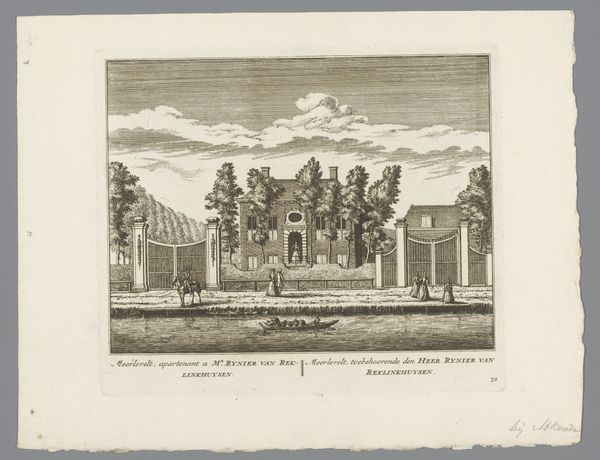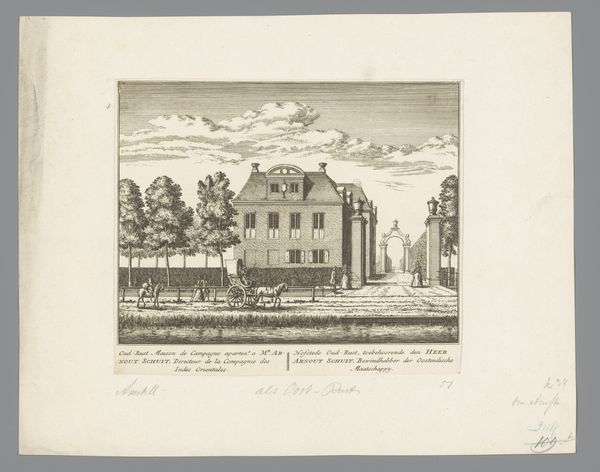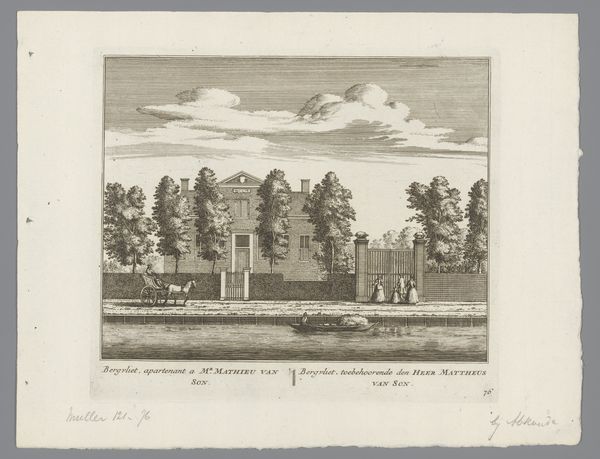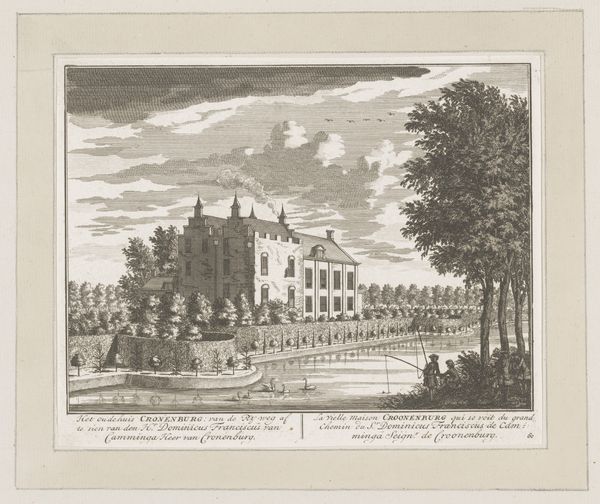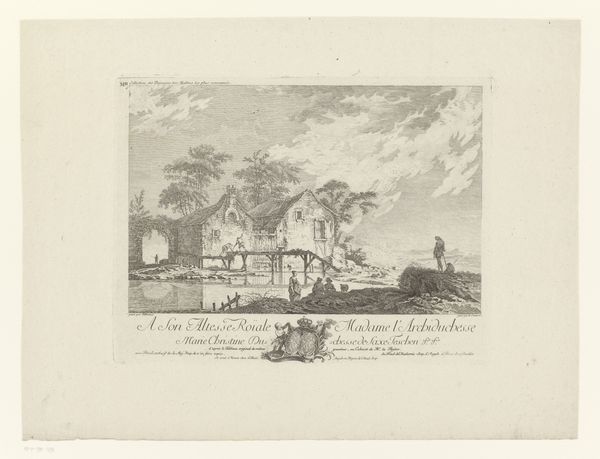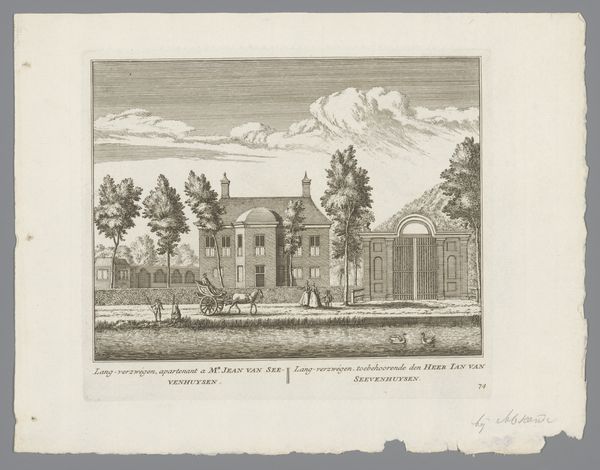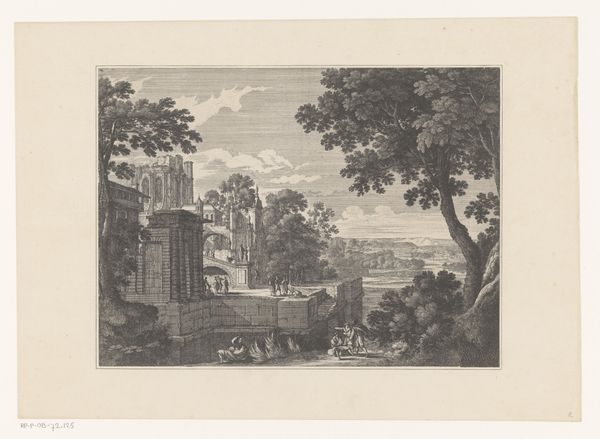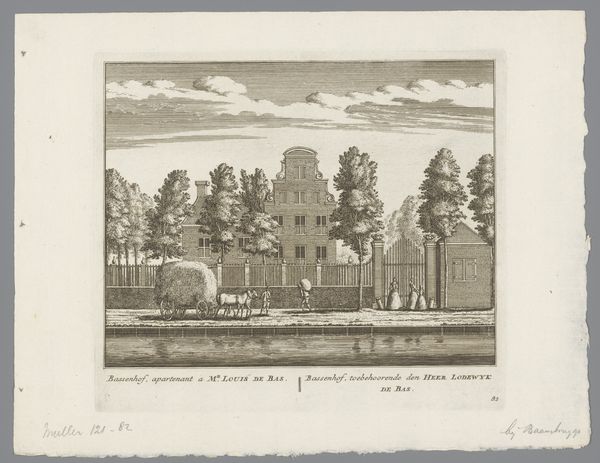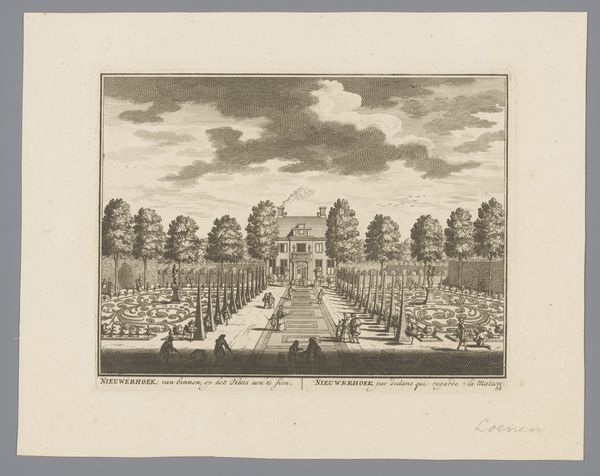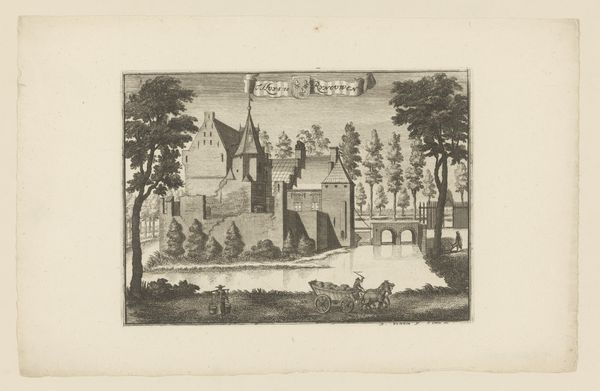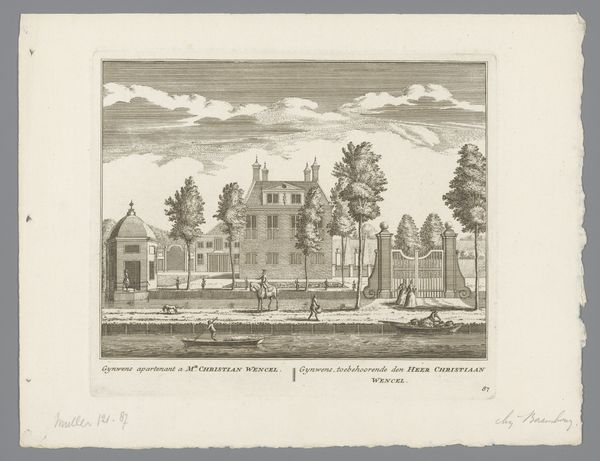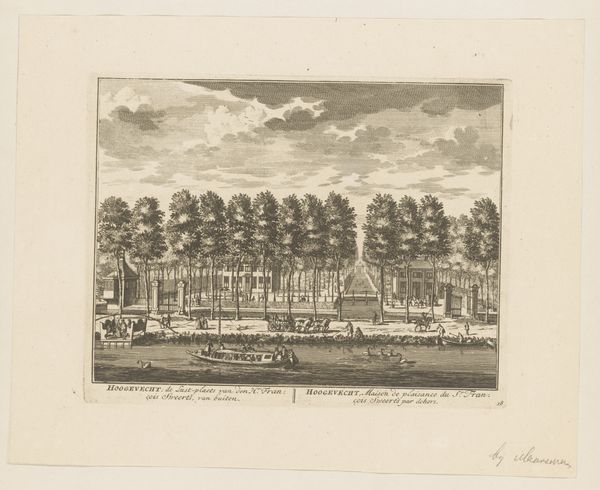
Gezicht op de binnenplaats van het Leprozenhuis te Amsterdam Possibly 1710 - 1766
0:00
0:00
anonymous
Rijksmuseum
print, engraving
#
baroque
# print
#
landscape
#
cityscape
#
engraving
Dimensions: height 163 mm, width 192 mm
Copyright: Rijks Museum: Open Domain
Editor: This is an engraving called "Gezicht op de binnenplaats van het Leprozenhuis te Amsterdam," or "View of the courtyard of the Leper House in Amsterdam," possibly from between 1710 and 1766. The anonymous artist depicted figures strolling casually in the courtyard of what appears to be some kind of institution. What strikes me most is the sense of ordered separation in the scene, how do you interpret this work? Curator: That's an insightful observation! Considering the Leprozenhuis served as a place of isolation for people with leprosy, the "ordered separation" speaks volumes. What are the socio-political implications of isolating the ill within a community? Does this separation extend beyond just the physical? Editor: That's a good question. I suppose keeping people separated makes disease harder to spread and probably prevented a great deal of illness in a time when diseases weren’t well understood. But what was it like for the people who lived there, who were pushed out from their communities? Curator: Precisely! And how did this segregation intersect with class? Who had access to these spaces, and who was left to fend for themselves on the streets? The engraving offers us a glimpse into the visual culture that normalized such practices. Notice the clean, ordered architectural lines. What ideological purpose might they serve? Editor: Perhaps those lines serve to create the feeling of authority? If the place looks orderly, people will accept its mission without questioning it. What do you make of the figures in the courtyard? Are they patients, visitors, or staff? Curator: Ah, an excellent question! Their dress suggests a degree of social standing, which might indicate visitors or administrators. But it is still crucial to look at the power dynamics embedded within such a scene. The landscape and cityscape themes remind us that spaces of segregation are not divorced from but inherent to the cities they exist in. This image helps us ask difficult questions about care, control, and community. Editor: Thank you. Thinking about this image in the context of disability and social structures provides a lens I hadn’t considered before. Curator: Indeed. By interrogating images like this, we reveal the often-uncomfortable truths about our history and its resonance in the present.
Comments
No comments
Be the first to comment and join the conversation on the ultimate creative platform.

